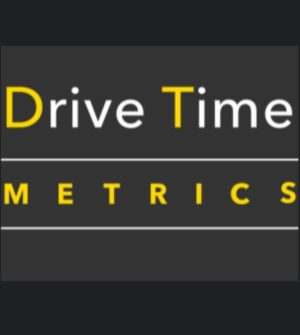
A company called Drive Time Metrics announced on Thursday it has been issued a patent which relates to the collection, measurement, and analysis of in-vehicle media usage data. Company Director and Product Manager Rob Favre said, “The radio industry will now have measurement at scale allowing more accuracy and deeper insights.”
DTM claims real-time measurement and analysis of all applicable forms of media that a driver or passenger may consume while in a vehicle can be achieved with its new technology. That includes: AM/FM/HD/DAB radio, satellite radio, stored media such as MP3 and CD/DVD, streaming media, Internet radio, audio books, podcasts, audio/video ads, and other forms of audio/video content. And, all content from any in-vehicle entertainment system and from integration with a smartphone or media player via wired or wireless connectivity, including Apple CarPlay and Android Auto.
We reached out to DTM’s founder and COO Robert Maccini who said, “We believe that the large data set derived from vehicles will have a tremendous impact on the quality of audio measurement and ad attribution services, allowing audio to prove its effectiveness. This is a giant step for the automotive, media, and advertising industries.”
Radio Ink: Can you explain what this is and exactly how it will work?
Maccini: There are approximately 15 million vehicles on the road with an embedded cellular modem. Given autonomous vehicles capability, by 2020 almost all vehicles manufactured will have an embedded cellular modem. Note that there are 17 million vehicles sold each year. The vehicle head unit can record data and then this is sent out of the vehicle via the embedded modem.
Radio Ink: When will it be available?
Maccini: We have done a test with a major OEM collecting data from over 50,000 vehicles. We will have data from millions of vehicles by the end of the year.
Radio Ink: Is this a device installed in the automobile or through the radio?
Maccini: This is technology that exists in most cars but as noted above the vehicle has to have an embedded cellular modem
Radio Ink: How will this be more accurate than PPM?
Maccini: This represents actual data at scale from millions of vehicles. In just our test in Los Angeles we collected data on 34,000 vehicles. PPM in LA, I believe, is based on about 3,000 meters.
Radio Ink: How and when will radio stations get the data?
Maccini: We have developed an online dashboard that we will license.
Radio Ink: Why will advertisers buy into the data?
Maccini: Primarily due to scale. Also it utilizes the same methodology across all audio sources. We also collect location data enabling ad attribution.






Nowhere in this article is the consent of the user mentioned. I would certainly not agree to this! Does the user of the vehicle have the ability to disable the cellular modem? Probably not! Time to go hack my vehicles electronics…..
The ONLY necessary measurement required by individual stations in EVERY market can be described as follows:
Instead of questionable or faulty audience measurement, a station’s sales representative can go to the street and overwhelmingly demonstrate superior Returns on Investment for its advertisers.
All that is required is for the on-air staff to become more effective and appealing communicators, and for a copywriting staff to acquire the skills to produce more effect commercials.
This is not Jungle Voodoo or Witch Doctory. Nor does it fall into the category of Rocket Surgery.
I remember when Phoenix had MobilTrak. It gave us previous days results of every cars radio carrier. If this new system can expand on how good MobilTrak was, I think they are on to something.
Mobiltrack turned out to be most useful as a Point of Purchase tracker which could correlate ad buys with traffic to a retailer’s parking lot.
Mobiltrack did not measure AM. It did not measure in-home and at-work, which then was more than 65% of all Arbitron reported listening. But most of all, it did not have any stratification variables… no age, no gender, no ethnicity, no education or income level data.
How will this provide gender and age breakouts?
With the average age of cars on the road at around 11 years, this system will not measure listening in a majority of older vehicles. This affects groups that tend to have older vehicles, including lower income, certain large ethnic groups and older people who change cars less often. In other words, it will over-sample higher income persons and will miss significant portions of the population that don’t have more recent vehicles.
There are over 250 million vehicles in the USA. If only slightly more than 5% have cellular modems, we can say that there is no way now or in the immediate future to get a representative sample of all ages, income levels and ethnicities with this system.
Of course, the system does not measure in-home and at-work listening at all. It’s a shiny new thing, but until there is much more detail about how a representative sample that mirrors the consumer universe can be obtained, it raises more questions than it answers.
Have to agree with David right now